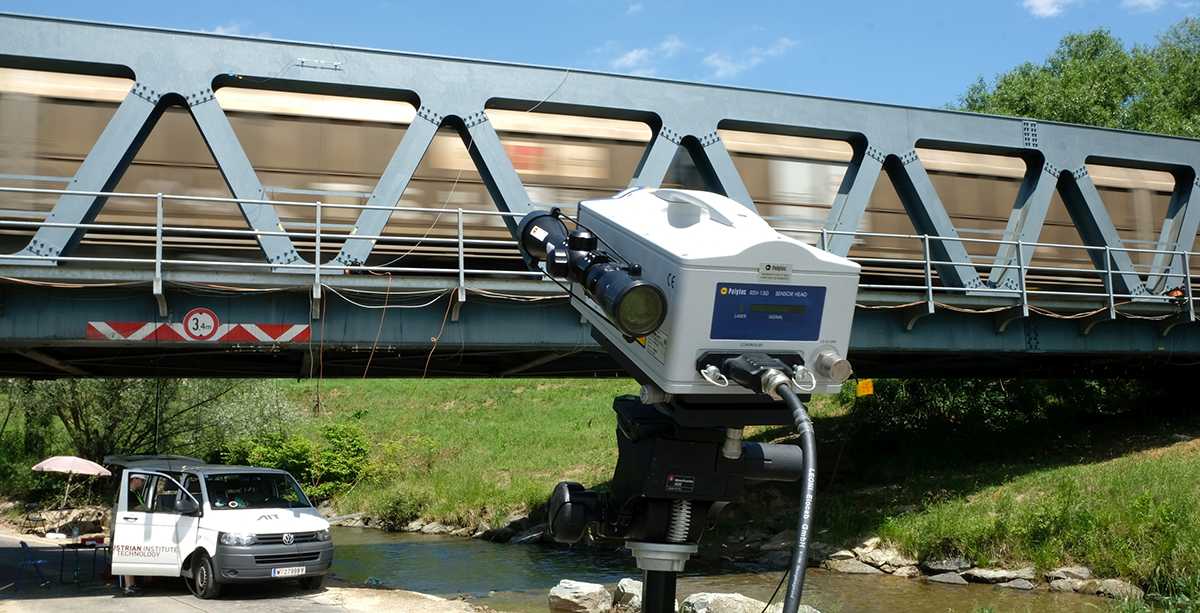Federal Minister Hanke: "Bridges, Dams, Rail Lines: Innovative Monitoring for Future-Ready Infrastructure" New Paths for Sustainable Structure Maintenance – Start of AIT Research Project NINA

Bridges and tunnels, dams and tracks – they form the backbone of mobility in Austria. Much of this infrastructure was built during the construction boom of the 1960s and 1970s and is now approaching the end of its calculated lifespan or is on the brink of a comprehensive maintenance cycle. Furthermore, since they were built, traffic volumes, climate conditions, and sustainability requirements have significantly changed.
"To both ensure the safety and stability of the structures and avoid costly new constructions, we are relying on innovation with the Austrian Institute of Technology (AIT). Currently, a large-scale research project is starting with NINA, which aims to intelligently extend the lifespan of existing structures through innovative monitoring and assessment methods – without compromising operational safety," explains Minister of Innovation and Infrastructure Peter Hanke.
In the NINA project, AIT, together with partners from science and industry, is developing new methods for early damage detection, lifespan prediction, and life cycle assessment of prestressed concrete bridges – a particularly critical class of structures. By using modern sensor technologies and digital assessment models, the condition of a bridge can be captured more accurately than ever. This not only enhances safety but also serves sustainability as it reduces the need for new constructions.
"Every bridge that we can safely use for ten more years not only saves money but also thousands of tonnes of CO₂. The bridges of the future are already built – now it's about using them intelligently for longer or implementing sustainable, targeted interventions at the optimal time," states Hanke.
Making Invisible Risks Visible
Prestressed concrete bridges are considered particularly maintenance-intensive: their tendons lie deep within the concrete and are prone to corrosion – a problem that is difficult to detect through conventional inspection. This is where NINA comes in.
AIT, together with TU Vienna, TU Graz, and industry partners, is researching novel fibre optic and acoustic measurement methods that identify wire breakage-specific signals long before they become safety-relevant. Combined with digital twins, a real-time image of the structure's condition is created.
At the same time, traffic and temperature models are being developed that precisely depict local loads – including future climate and traffic developments. Based on this, researchers derive realistic lifespan forecasts. Additionally, AIT analyses comprehensive life cycle assessments to determine which maintenance measures are ecologically most sensible – including traffic-related emissions during construction.
Digital Twins, Satellites, Sensors: A New Era of Condition Monitoring
AIT has been working for years to push the boundaries of classical structure monitoring. What was once limited to local measuring points is now complemented with satellite data, virtual sensors, and AI-supported models.
In projects like SENBRIDGE and BOOST, methods were developed together with ASFINAG and other partners to precisely capture bridge deformations on a large scale and contactless using ESA satellite data (Sentinel-1). The so-called InSAR technology (radar interferometry) allows movements in the millimetre range to be detected with the algorithm developed by AIT – without using a single sensor on the structure. This way, critical changes in the network can be identified from afar before they become a danger.
A similar approach is pursued in the HoSMoS project, which investigates satellite monitoring for flood protection facilities. Here, earth dam deformations are measured from space to identify weaknesses early.
Clear the Way for Sustainable Mobility of the Future
AIT is also driving change in the rail sector. In the COMET Rail4Future project – led by ÖBB – a digital simulation platform was created that enables virtual evaluation of bridges and tracks and precise prediction of their remaining lifespan. The basis is fibre optic measurements, AI-supported analyses, and data-driven models.
In large-scale trials on the Pinkabach Bridge, AIT impressively demonstrated how Distributed Fiber Optic Sensing (DFOS) captures crack formations and fatigue processes in real time – a decisive step towards intelligent, predictive maintenance. This approach is being further developed in the FOSSURE project where fibre optic cables were embedded directly into the bridge structure. This allows various physical parameters such as strain, temperature, traffic influences, or crack developments to be monitored long-term and precisely.
Sustainability Through Knowledge Instead of New Construction
Bridges that last longer mean not only more safety but also less CO₂ emissions. An average bridge contains about two thousand tonnes of CO₂ – roughly the same amount as a car produces in four hundred circumnavigations of the world.
AIT researchers see this as a central lever for the climate change in the infrastructure sector. Their vision: A data-based maintenance strategy that determines the optimal timing for renovations, uses low-footprint materials, and avoids or at least significantly delays new constructions wherever possible.
Research That Bridges Gaps
With projects like NINA, SENBRIDGE, BOOST, HoSMoS, FOSSURE, and Rail4Future, the Austrian Institute of Technology is driving a fundamental transformation: from reactive repairs to preventive, data-based structure maintenance.
The goal is infrastructure that is resilient, resource-efficient, and digitally networked – thereby making a decisive contribution to the sustainable mobility of the future.
"Research in this area is crucial to extend the lifespan of our infrastructure," emphasises University Professor Andreas Kugi, Scientific Director of AIT. "With innovative measurement and analysis methods, we create the basis for targeted, resource-efficient maintenance measures and thus make a significant contribution to safety, efficiency, and sustainability."